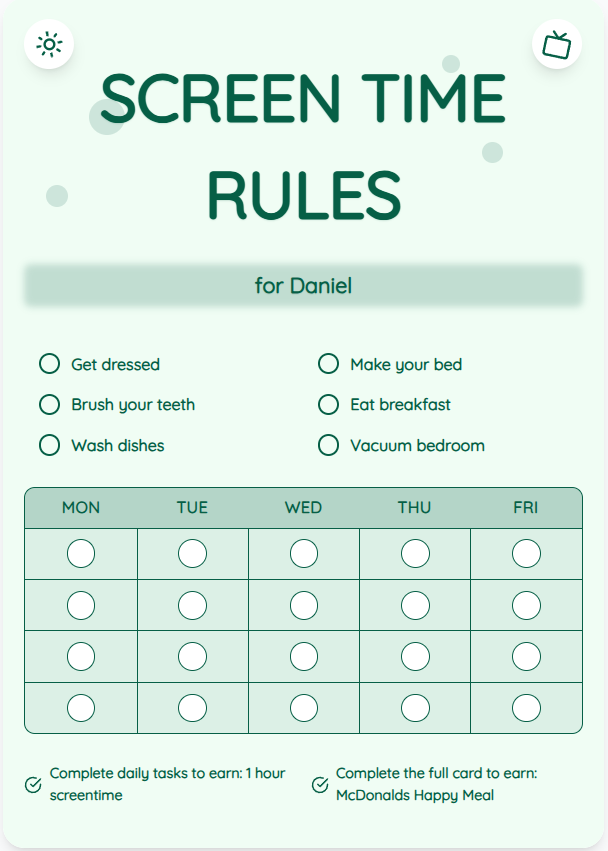Navigating AAP Screen Time Guidelines PDF: A Parent's Guide
As a parent, managing your child's screen time can be challenging. The American Academy of Pediatrics (AAP) provides guidelines to help you navigate this digital landscape effectively. In this comprehensive guide, we'll explore actionable advice and practical tips to ensure a healthy balance for your child's screen time.
See What Your Screen Time Chart Will Look Like
Here's an example of a beautiful, customizable screen time rules chart you can create for your family

Understanding AAP Screen Time Guidelines
The AAP recommends limiting screen time for children aged 2-5 to one hour per day of high-quality programming. For children aged 6 and older, establish consistent limits on screen time while prioritizing sleep, physical activity, and other healthy behaviors. Understanding these guidelines is crucial for creating a balanced approach to screen time in your household.
Practical Tips for Managing Screen Time
1. Create a screen time schedule that includes designated times for educational content and entertainment. 2. Use screen time charts to visually represent and track your child's daily screen time usage. 3. Encourage outdoor play, hobbies, and family activities to reduce reliance on screens. 4. Model healthy screen time habits by setting boundaries and participating in screen-free activities with your child.
Put These Tips Into Action
Create a custom chart to implement these strategies with your child
Setting Screen Time Boundaries
Establish clear rules around when and where screens can be used in your home. Consider implementing tech-free zones like the dining table and bedrooms. Encourage open communication with your child about the importance of balance and moderation when it comes to screen time.
Promoting Healthy Screen Time Habits
Limit exposure to screens before bedtime to promote better sleep quality. Encourage your child to engage in activities that stimulate creativity, critical thinking, and social interaction. Monitor the content your child consumes and have regular discussions about online safety and digital citizenship.
Practical Tips for Success
- Create a screen time schedule
- Use screen time charts for tracking
- Establish tech-free zones in your home
- Encourage outdoor play and family activities
Frequently Asked Questions
How can I use screen time charts effectively?
Screen time charts can help visually represent your child's daily screen time allowance and usage. By involving your child in tracking their screen time, you promote self-regulation and awareness of their digital habits.
What are the benefits of setting screen time boundaries?
Setting clear screen time boundaries helps establish healthy habits, reduce conflicts, and promote a balanced lifestyle for your child. Consistent rules provide structure and guidance in managing screen time effectively.
How can I encourage my child to have a healthier relationship with screens?
Encourage a variety of activities beyond screens, such as outdoor play, creative hobbies, and family bonding experiences. Model balanced screen time habits yourself and engage in open conversations about responsible digital use.
By following the AAP guidelines and implementing practical tips, you can create a harmonious balance between screen time and other activities in your child's life. Explore ScreenTimeRules.com for customizable screen time charts and tools to support your journey towards healthy screen time management.
Ready to Transform Your Family's Screen Time?
Join thousands of parents who have successfully managed screen time with our customizable charts.
